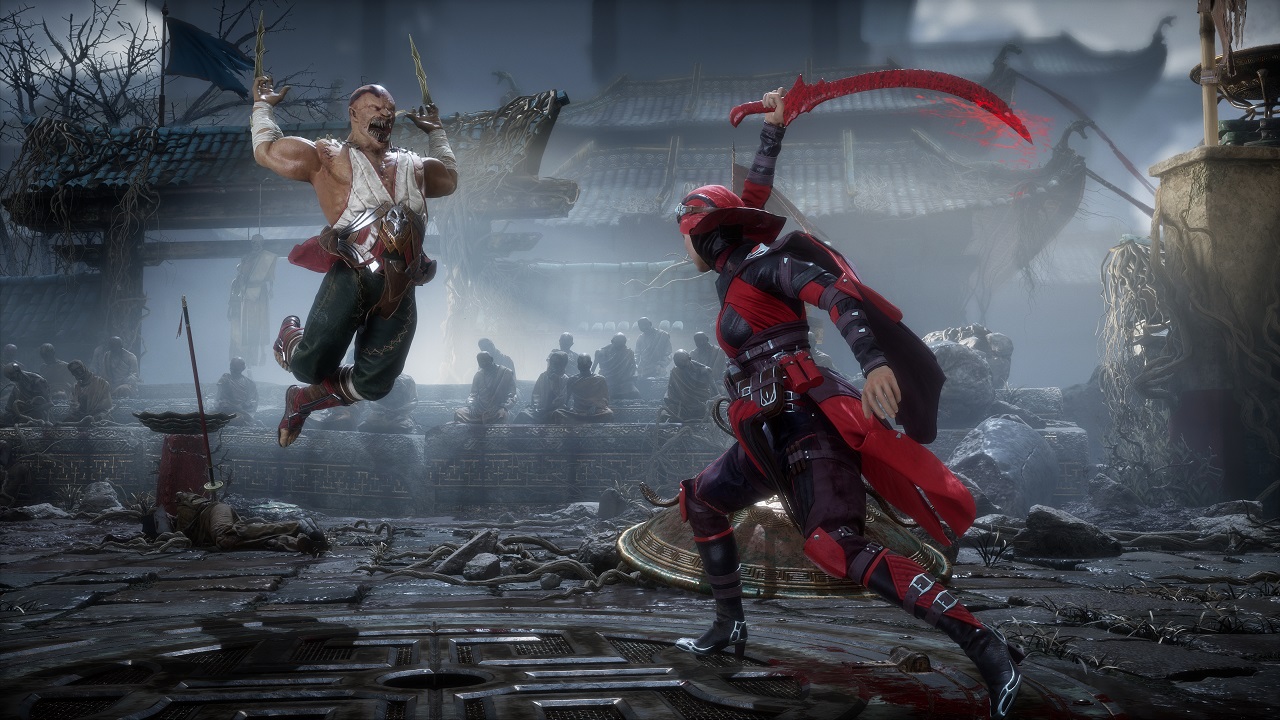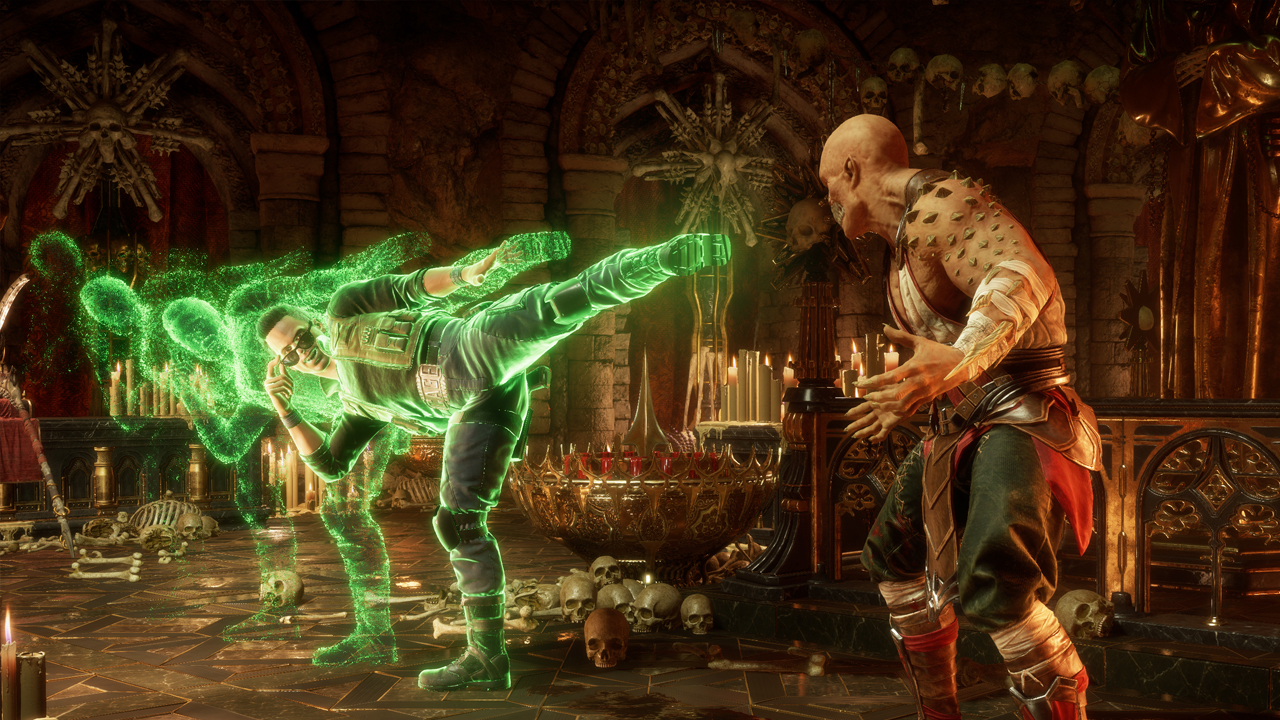
Truth be told, there is only one studio on the planet that could be capable of building something as utterly audacious as Mortal Kombat 11. And that studio is NetherRealm. This studio has basically torn its most famous creation apart one ligament at a time, all in an effort to build a bigger and better brawler than anything it has put in the past. Yes, just like those grotesque finishing moves we all gaze at in horrified fascination. Or is that just me?
NetherRealm is attempting to leverage the momentum it has gained between the releases of Mortal Kombat X and Injustice 2 – the tech and toolsets it has developed, the lessons learned along the way, and so much more – in an effort to build something truly exceptional. When Mortal Kombat 11 releases April 23 for PS4, Xbox One, PC, and Switch it will still be comprised of the usual blood, brutalities and fatalities, but they have been arranged around a tighter and, frankly, more composed structure than anything we have seen out of the studio before. This is the Mortal Kombat that you know and love, only it’s faster, fresher and far more thrilling than it has been in quite some time.
Outstripping Mortal Kombat X
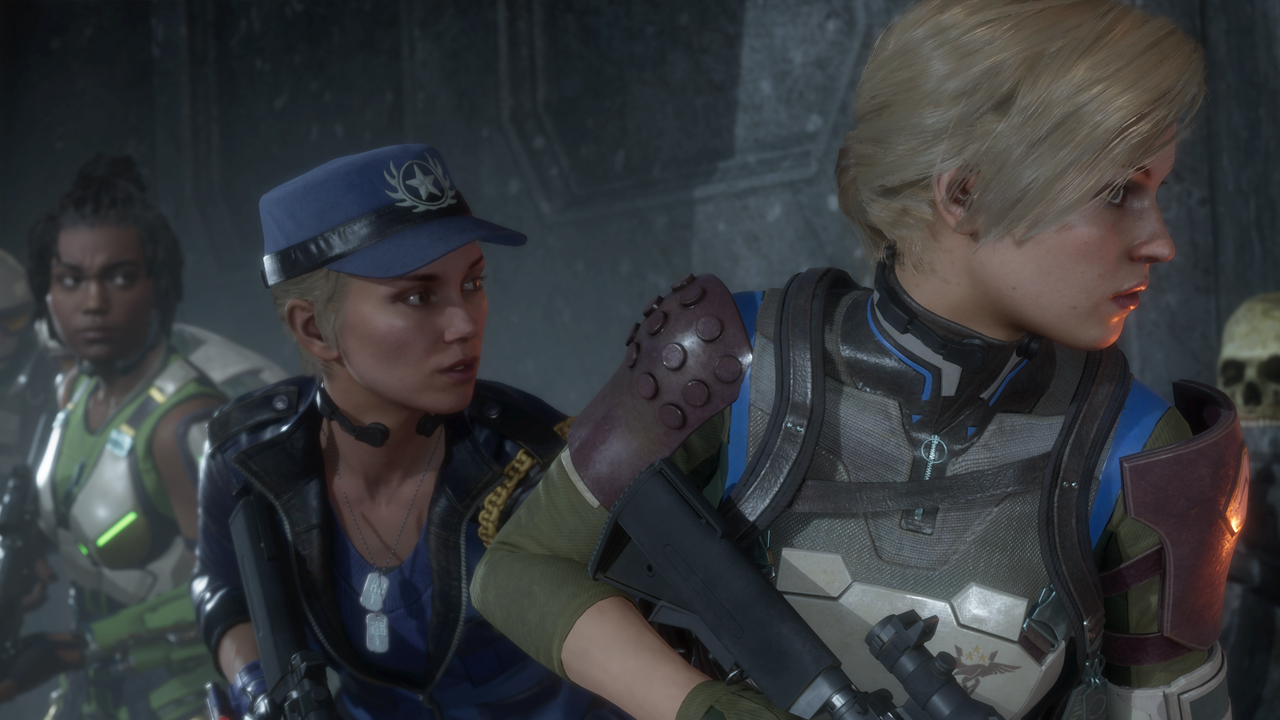
NetherRealm settled on its core goals for Mortal Kombat 11 quickly. The game had to be bigger, offering a more diverse and broad array of content than any game in the series that has come before it. It had to further bridge the gap between competitive and casual players, with a focus on delivering frictionless combat and in ensuring that the most bombastic combos in the movesets are never out of reach for each and every player.
"As proud as we are of Mortal Kombat X, it was a very rushdown game"
Ed Boon, Creative Director
And, finally, and perhaps most importantly for Mortal Kombat co-creator and Creative Director Ed Boon, it had to be feel different. "We definitely don't want anybody to play Mortal Kombat 11 and go 'oh, it's just Mortal Kombat X with prettier graphics and different characters'. So, from the very beginning of production, that was actually one of our goals,” he tells me. Regardless of whether you want to engage in competitive combat, enjoy the wonderfully cinematic (and totally ridiculous) story mode, speed through the Towers of Time challenges, or waste away the hours changing up the costumes of your favourite fighters, you can feel the change surging through Mortal Kombat 11 as soon as you pick up a controller. It feels different to Mortal Kombat X (to Injustice 2 as well, for whatever that’s worth) with the action unfurling itself on screen quickly, but more methodically than what has come before. As Boon explains it, the team was eager to alter the guiding philosophy behind the combat as it looked towards this new instalment.
"As proud as we are of Mortal Kombat X, it was a very rushdown game," he says, referring to the idea that the game was heavily defined by aggressive and intimidating play styles that could quite easily overwhelm casual players. "That said, we didn't want to dial the intensity down. We wanted to make it a little bit more strategic; We wanted to make the pacing a little bit less frenetic, but also get the camera closer into the action to make it more intense – we really want people to feel like they are closer to the action than ever before.”
The result is a fighter that feels expressive and accessible, slick and approachable. One of the biggest changes to play that any MK veteran will immediately notice is the slower movement speed, with the ability to dash quickly across the arena removed. This small tweak forces a big shift in the way battles play out. You’re forced to get up close and personal with your foe, to think tactically and act methodically.
There's no such thing as too many modes
But putting something together on the scale of Mortal Kombat 11 isn’t easy. To create and implement this level of content, not to mention pursuing these mechanical and system-level changes, is a huge undertaking. One that, frankly, other studios in the industry would tackle over a number of years, treating the title as a Games as a Service to help mitigate the overflowing pipeline. But NetherRealm is no ordinary studio. “Our story mode is an entire project in itself; so is the Towers of Time, the online modes, all the fighting, it's just…” Boon sort of throws his arms up, he’s at a loss when considering the amount of effort and energy that has been poured into this project. “There are just so many major projects, each one of which is a two-year project in itself,” he continues. “We have them all running in parallel and, somehow, it all comes together in the end.”
Sign up to the GamesRadar+ Newsletter
Weekly digests, tales from the communities you love, and more
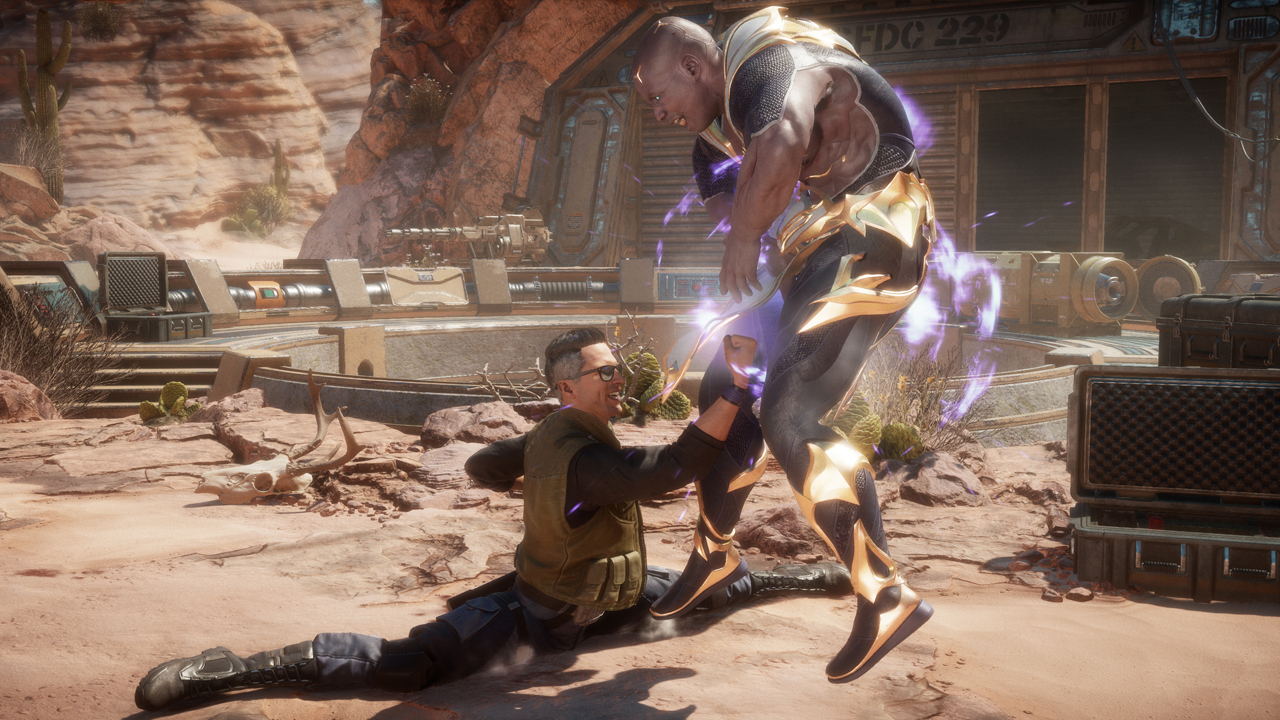
Let’s isolate one aspect as an example: the story mode. What really struck me was just how impressive the character animations were, particularly in the astounding cutscenes that do a decent enough job of staving away my desire for another shlocky live-action movie. And so I took the question to NetherRealm’s studio head John Hemerick – what the hell is going on with the animations in this game? “When we moved in here nine years ago – we left Midway and we joined Warner Brothers – and we built the studio from scratch in here,” Hemerick tells me, standing in the centre of a gigantic mocap room adorned with cameras, screens and rope rigging.
"[Our actors] go through 50 different poses – cheeks out, squint, puffy, bare your teeth and so on"
Ed Boon, Creative Director
When it comes to mocapping, Injustice 2 marked a noticeable shift in terms of production value. It’s something the studio can’t back away from now, even if the increased workload is yet another strain on an already stacked development pipeline. Not that the team would want to back away from it, mind, because the results really do speak for themselves. “For Injustice 2 we started scanning actors – all our actors get scanned now. Our lead character artist built this room in the studio from the ground up and he was one of the first to ever build them. It has 62 DSLR cameras all pointed at the face of a single actor; they sit down and then go through 50 different poses – cheeks out, squint, puffy, bare your teeth and so on…,” he says, acting them out as he does. It might sound ridiculous, but it all pays off in the end.
Above and beyond
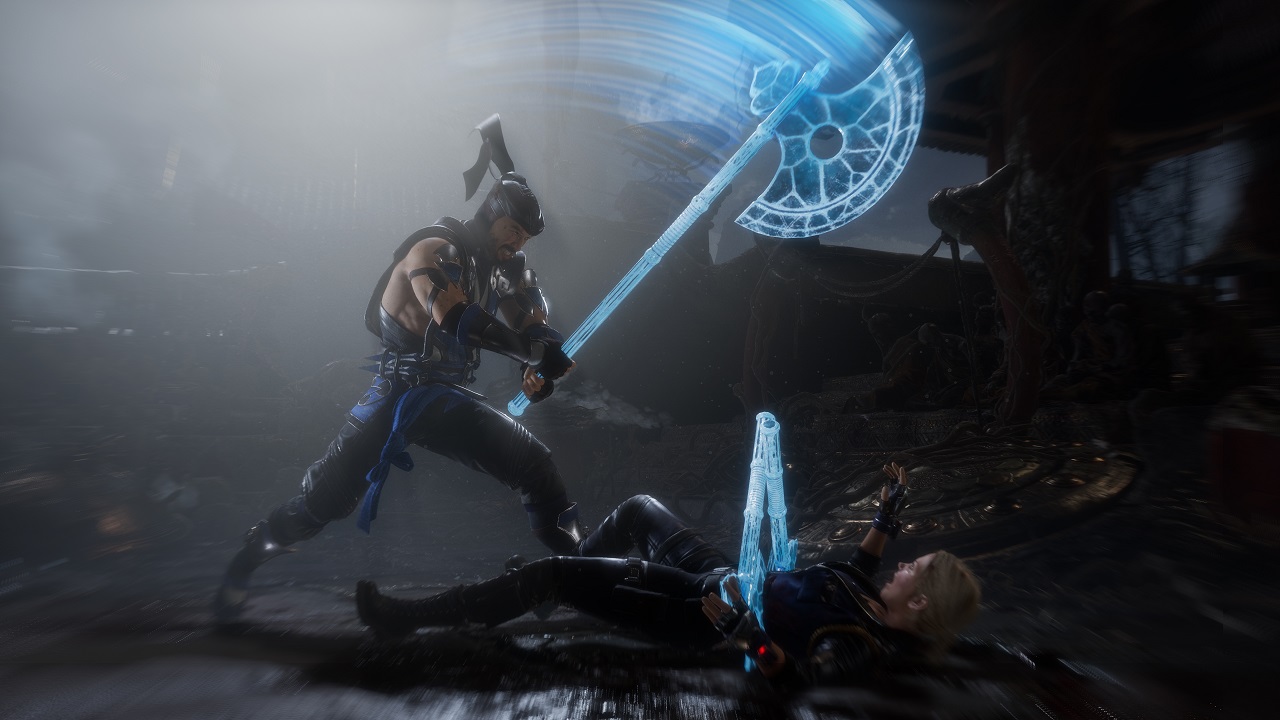
That desire to go above and beyond is prevalent throughout the studio and the staff we are able to speak to. Perhaps that is how NetherRealm is able to create something on this scale. The team is constantly iterating between projects, using the momentum it gains to continue surpassing expectation, and Boon tells me that the studio treats the leap between Mortal Kombat and Injustice as a palette cleanser of sorts – a space that lets the studio develop new tech and ideas, building on them for the next game to come. “When we finish one game and approach a [franchise] that we’ve been away from for two years we can look at it with some fresh ideas,” says Boon, who believes that working only on the one series would have a negative effect on development. “That's when things can get a little repetitive,” he continues, adding, “What this does is it just kind of cleanses our palette and lets us come at production with fresh ideas.”
"There’s just tons and tons of content in this game, and I’m just so proud"
Steve Beran, Art Director
“I’ve been working here since Mortal Kombat 3, and I’m just amazed at how god damn… there’s just tons and tons of content in this game, and I’m just so proud and amazed that we got this done,” Art Director Steve Beran says, pausing to collect himself, “…I’m just so proud.” Mortal Kombat 11 is something NetherRealm is deeply proud of, and it shows in everything – the UX, the VO, the animation and the sound design, everything. NetherRealm released Injustice 2 the year that Mortal Kombat should have been celebrating its 25th anniversary, but in many ways, that’s how you should view Mortal Kombat 11: it’s a gigantic celebration of everything that made the series as beloved as it is today. What's clear is that NetherRealm is attempting to push forward the genre with one of the slickest, mechanically enticing and engaging fighting games we’ve seen this generation.
Can't wait for Mortal Kombat 11? Here are the best fighting games you can play right now, or if you want something completely different just glance below to watch our list of the best open world games you can play right now!

Josh West is the Editor-in-Chief of GamesRadar+. He has over 15 years experience in online and print journalism, and holds a BA (Hons) in Journalism and Feature Writing. Prior to starting his current position, Josh has served as GR+'s Features Editor and Deputy Editor of games™ magazine, and has freelanced for numerous publications including 3D Artist, Edge magazine, iCreate, Metal Hammer, Play, Retro Gamer, and SFX. Additionally, he has appeared on the BBC and ITV to provide expert comment, written for Scholastic books, edited a book for Hachette, and worked as the Assistant Producer of the Future Games Show. In his spare time, Josh likes to play bass guitar and video games. Years ago, he was in a few movies and TV shows that you've definitely seen but will never be able to spot him in.
